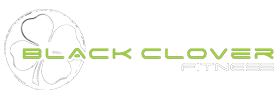Are your knees, low back, shoulders, or neck ever in pain after working out? Does it occur usually after performing one or more of the following exercises: Squats, Dead lifts, or Cleans? This could be a result of improper form, technique, and weight. Unfortunately injuries are more common that not when exercising, so I would like to take this time discuss some of the most common injuries associated with them types of lifts and also how you can prevent them.
Some of the most common injuries to occur while exercising, especially when performing squats, dead lifts, or cleans include but are not limited to the following:
Shoulder Impingement Syndrome - This injury is caused by an inflammation to the tendons around the rotator cuff in the shoulder. This is typically caused by any overhead weight lifting activities, such as lateral raises, bench presses and shoulder presses. Typically, the first signs of this injury are pain in the front of the shoulder and the side of the upper arm. The pain will first be noticeable only when raising the arms.
Rotator Cuff Tear - A tear to the rotator cuff may occur with the same exercises that could cause shoulder impingement syndrome. However, a tear is a much more serious condition that comes with intense pain immediately after the tear occurs. The arm will become weak and a snapping sensation may also be felt.
Patellar Tendonitis - This injury involves inflammation to the tendon connecting the kneecap to the shinbone. It is often a result of the quadriceps muscles being too tight or overused. This adds stress on the kneecap, which causes the inflammation. The condition is marked by pinpoint pain at the base of the kneecap.
Back Sprains and Strains - Sprains involve torn or stretched ligaments in the back, while a strain affects torn muscles or tendons. In both cases pain, swelling and trouble moving the back easily are common symptoms.
Herniated Disk -This condition occurs when comes of the cushions between the vertebrae in the backbone either slips out of place or ruptures. This can be caused by trying to lift heavy weights with your back muscles rather than the muscles in your legs.
All these injuries and other can be prevented by following 3 simple rules.
Rule 1: Check your ego at the door
When you walk into a gym you are the same as everyone else, though your goals may be different your reasons are the same, to better yourself and live a healthier lifestyle. Egos in gyms are like bulls in a china shop. They do more harm than good, so always check your ego at the door.
Rule 2: Form first, weight later
Improper form can pull, rip or wrench a muscle, or tear delicate connective tissue quicker than you can strike a match. Each person’s body has very specific biomechanical pathways. Either make the
rep using perfect form or miss the weight. Good form not only helps prevent injuries but also allows your muscles to grow and develop properly.
Rule 3: Seek help and advice
If you are unsure of your form or any lifts don’t be afraid to seek the help of a certified trainer to watch you to make sure you are performing an exercise or lift correctly. Not only can they help you perfect your form and technique, they can also inform you on other lifts / exercises to help challenge you for your specific needs.


